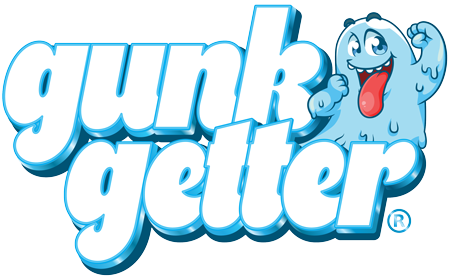Frequently Asked Questions
1. Why should I involve my kids in household cleaning?
2. What age-appropriate cleaning tasks can I assign to my toddler?
3. How can I make cleaning fun for my kids?
4. What educational elements can I incorporate while cleaning?
5. What items are recommended to include in a Home Cleaning Kit for kids?
Involving kids in household cleaning can be both a challenge and an opportunity. While it might seem daunting at first, engaging children in cleaning tasks not only creates a cleaner home but also teaches them essential life skills. If you're searching for ways to make cleaning enjoyable and educational, you're in the right place! This blog post will explore creative methods to involve your kids in the cleaning process using your trusty Home Cleaning Kit, ensuring that cleaning is a family affair!
Understanding the Importance of Involvement
Introducing children to cleaning at an early age can foster responsibility and independence. Here are some key benefits of involving kids in household cleaning:
- Life Skills: Learning how to clean effectively prepares children for adulthood.
- Teamwork: Cleaning together promotes collaboration and bonding in the family.
- Discipline: Regular chores can instill a sense of discipline and routine.
- Creativity: Kids can use their imagination to find fun ways to clean and organize.
Choosing the Right Tasks for Kids
Not all cleaning tasks are suitable for children. When selecting chores, consider their age and ability. Here’s a breakdown of age-appropriate tasks that can be done using a Home Cleaning Kit:
For Toddlers (Ages 2-4)
- Sorting Clothes: Let them help you sort laundry by color.
- Putting Away Toys: Encourage them to return toys to designated areas.
- Dusting Low Surfaces: Provide a soft, safe cloth for them to use on lower shelves.
For Preschoolers (Ages 4-5)
- Wiping Tables: Use damp cloths to clean dining tables after meals.
- Organizing Their Space: Teach them to arrange their personal items and toys.
- Watering Plants: They can help with an indoor plant care routine.
For Early Elementary (Ages 6-8)
- Vacuuming and Sweeping: A lightweight vacuum or broom can be easy for them to handle.
- Setting the Table: Get them involved in dinner preparation by helping with table settings.
- Trash Duty: They can be responsible for taking out the trash or recycling.
Making Cleaning Fun
To enhance engagement, it's crucial to make the cleaning process enjoyable. Here are some fun strategies to consider:
Gamify the Cleaning Process
Turn cleaning chores into games. You can set a timer and challenge kids to see how much they can clean within that timeframe. Provide rewards or incentives for completing tasks, like earning stars or stickers in a chore chart. Children often respond positively to a little friendly competition!
Play Some Music
Create a cleaning playlist filled with fun and upbeat songs. Dancing while cleaning can add a joyful atmosphere, making chores feel less like work. This is particularly effective with young children who may love to sing and move around!
Dress Up for the Occasion
Let your kids wear their favorite costumes or fun cleaning hats while they help you. Creating a playful atmosphere encourages their imagination and makes cleaning feel like an adventure rather than a chore.
Incorporating Educational Elements
Cleaning isn't just about tidiness; it's also a learning opportunity. Use the cleaning time to teach your kids valuable lessons:
Science of Cleaning
Explain the "why" behind cleaning. Discuss germs, dust, and allergens. Show them why it's essential to clean certain areas, and you can even make it a science lesson! Try a simple experiment, like mixing safe cleaning solutions, to visually demonstrate how cleaning products work.
Mathematics in Action
Introduce simple math by measuring out cleaning solutions or counting items while sorting. For instance, ask them how many books they have or how many toys need to be put away. This adds an educational twist while ensuring the cleaning gets done.
Establishing a Cleaning Routine
Routines provide structure and predictability. Consider setting up a family cleaning schedule where everyone knows their specific tasks. Here's how you can create a cleaning routine that works for the family:
Creating a Weekly Cleaning Chart
Design a colorful chart that outlines daily or weekly tasks. Ensure that each child has a designated task, incorporating their abilities. Use stickers or magnets for a tactile approach to tracking progress!
Utilizing Feedback
After completing cleaning tasks, take a moment to discuss how they felt about the experience. Ask for their input on what they enjoyed or what could be improved. This helps to validate their efforts and encourages active participation in future cleaning tasks.
The Power of Your Home Cleaning Kit
Ready to elevate your cleaning game? A well-stocked Home Cleaning Kit can make all the difference in how effectively your kids can engage in cleaning. Consider including the following items in your Home Cleaning Kit:
- Non-toxic cleaners: Safe for kids and the environment.
- Child-sized cleaning tools: Brushes, mops, and brooms that fit their hands.
- Colorful cloths: Soft rags or wipes that kids can use for dusting.
- Fun storage containers: These can help kids learn to organize.
Encouraging Ownership
Allowing kids to choose their favorite cleaning tool from the Home Cleaning Kit can instill a sense of ownership and pride in their responsibilities. When they feel like they have a choice, they're more likely to participate willingly.
Transforming Chores into a Family Bonding Experience
Cleaning can become an opportunity for bonding rather than just a mundane task. Here are a few tips to create a positive environment:
Sharing Family Stories
While cleaning, share stories or memories associated with the spaces you’re cleaning. This not only adds emotional value but helps create a tradition of storytelling while working together.
Team Challenges
Form family teams for friendly “clean-off” challenges. Who can clean their area the fastest while doing it correctly? This playful strategy will engage everyone and elevate the atmosphere.
Keeping It Positive
As with any teaching moment, maintaining a positive and encouraging attitude is crucial. Even when tasks may not be performed ideally, it’s essential to offer praise for effort and participation. Kids are more likely to embrace cleaning if they feel supported and recognized.
The Importance of Praise
Each time your child completes their task, whether big or small, acknowledge their effort with genuine praise. This supports a growth mindset and encourages them to embrace responsibilities.
Patience is Key
Cleaning with kids can be a bit messy and may not always go as planned. Maintaining patience and keeping a light-hearted approach encourages a positive learning environment.
Craft Your Cleaning Adventure
By implementing these strategies, involving kids in household cleaning can be an enriching experience for both parents and children. Remember to utilize the Home Cleaning Kit effectively, make it enjoyable, and focus on the learning aspects.
Recruiting your kids to clean isn’t just about clearing space; it’s about nurturing lifelong skills and family bonding. So grab your Home Cleaning Kit and get ready for a fun-filled cleaning adventure that will lead to a sparkling home and happier hearts. You might just find you are creating cherished memories that last well beyond the wipe of a cloth!


Share:
Cleaning Myths Debunked: What Really Works?
The Secret to Cleanliness: How Organization Plays a Role